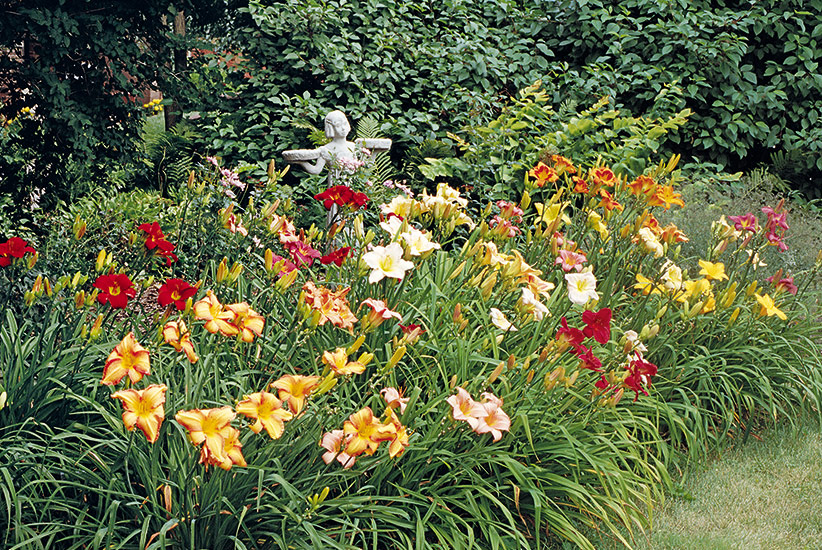Daylilies are a gorgeous addition to any garden. If you’re wondering how to arrange these beauties and create a daylily garden, here are some tips. First, choose a sunny location with well-drained soil. Then dig a hole twice the size of the roots and place the plant in such a way that the roots are covered with soil.
Add a layer of mulch to retain moisture. When arranging multiple daylilies, group them in threes or fives and stagger the heights.
| Highlights | Description |
| Daylily colors | Beautiful colors add interest to the garden |
| Companion plantings | Choosing plants that grow well with daylilies |
| Daylily varieties | Different types of daylilies for your garden |
| Designing with daylilies | Creative ways to incorporate daylilies in your garden |
| Daylily care | Tips for maintaining healthy daylilies |
What Pairs Well With Daylily?
Daylilies go well with echinacea, lavender, shasta daisy, Bermuda, phlox, black-eyed susan, baby’s breath, and yarrow.
Daylilies are a popular addition to gardens for their stunning blooms and easy maintenance. But what pairs well with daylily?
Some great companion plants for daylilies include: hostas, astilbes, coneflowers, coreopsis, and black-eyed Susans.
These plants not only look great together but also have similar growing conditions and are easy to care for. Pairing daylilies with other plants also creates a more dynamic and diverse garden.
Plus, with the different bloom times, there will always be something colorful in your garden throughout the growing season. So, add some companion plants to your daylilies and enjoy the beauty they bring!
What Is The Best Placement For Daylilies?
Even though daylilies prefer full sun, they can occasionally be found in the shade of tall trees. Wherever some shade is present, the daylily flowers will face away from it toward the open sky. Daylilies should be planted in full sun or partial shade that receives 4-6 hours of sun per day.
Daylilies are a popular flowering plant admired for their vibrant colors and hardiness. When choosing a placement for daylilies, it is important to consider their sunlight and watering needs. These plants thrive in full or partial sunlight and require soil that is well-draining but moist.
Additionally, daylilies prefer to be planted in an area where they can receive at least an inch of water per week. To ensure the best placement for daylilies, choose a spot that meets these requirements and offers enough space for the plants to grow and spread.
Important items to consider when placing daylilies:
- Sunlight needs: full or partial sunlight
- Soil: well-draining but moist
- Watering: at least one inch of water per week
- Space for growth and spreading
Not:In addition to the information we have provided in our article on
daylily garden design ideas, you can access the wikipedia link here, which is another important source on the subject.
What Are The Smallest Daylilies?
The flowers of the miniature daylily (Hemerocallis) have a diameter of less than 3 inches and are always fascinating and lovely additions to your daylily collection.
Daylilies are a type of flower that are popular for their vibrant colors and ease of care. Some growers prefer small, compact daylilies which are known as the smallest daylilies.
These tiny plants can be as small as six inches tall and are perfect for small gardens or container planting. The petite flowers bring beauty and charm, with vivid hues ranging from soft pastels to fiery shades.
The smallest daylilies are great for gardeners who desire low-maintenance plants that add color and interest to their landscape. They’re also ideal for those with limited garden space or for those looking to experiment with new plants.
Important items about the smallest daylilies:
– Small daylilies can be as small as six inches tall
– They are low-maintenance and easy to care for
– The petite flowers come in a range of vivid hues and are perfect for gardeners with limited space.
FAQ – Daylily garden design ideas
What are some daylily garden design ideas?
Mix colors, plant in groups, curvy beds.
Do daylilies require a lot of maintenance?
Low maintenance, only need water and fertilizer.
